1. Agodi A, Voulgari E, Barchitta M, Quattrocchi A, Bellocchi P, Poulou A, et al. Spread of a carbapenem- and colistin-resistant
Acinetobacter baumannii ST2 clonal strain causing outbreaks in two Sicilian hospitals. J Hosp Infect. 2014; 86:260–266. PMID:
24680473.
2. Cai Y, Chai D, Wang R, Liang B, Bai N. Colistin resistance of
Acinetobacter baumannii: clinical reports, mechanisms and antimicrobial strategies. J Antimicrob Chemother. 2012; 67:1607–1615. PMID:
22441575.
3. Li J, Rayner CR, Nation RL, Owen RJ, Spelman D, Tan KE, et al. Heteroresistance to colistin in multidrug-resistant
Acinetobacter baumannii. Antimicrob Agents Chemother. 2006; 50:2946–2950. PMID:
16940086.
4. Peleg AY, Hooper DC. Hospital-acquired infections due to Gram-negative bacteria. N Engl J Med. 2010; 362:1804–1813. PMID:
20463340.
5. Amudhan SM, Sekar U, Arunagiri K, Sekar B. OXA beta-lactamase-mediated carbapenem resistance in
Acinetobacter baumannii. Indian J Med Microbiol. 2011; 29:269–274. PMID:
21860108.
6. Evans BA, Amyes SG. OXA beta-lactamases. Clin Microbiol Rev. 2014; 27:241–263. PMID:
24696435.
7. Karaiskos I, Galani L, Baziaka F, Giamarellou H. Intraventricular and intrathecal colistin as the last therapeutic resort for the treatment of multi-drug-resistant and extensively drug-resistant
Acinetobacter baumannii ventriculitis and meningitis: a literature review. Int J Antimicrob Agents. 2013; 41:499–508. PMID:
23507414.
8. Nation RL, Li J. Colistin in the 21st century. Curr Opin Infect Dis. 2009; 22:535–543. PMID:
19797945.
9. Newton BA. The properties and mode of action of the polymyxins. Bacteriol Rev. 1956; 20:14–27. PMID:
13303920.
10. Schindler M, Osborn MJ. Interaction of divalent cations and polymyxin B with lipopolysaccharide. Biochemistry. 1979; 18:4425–4430. PMID:
226126.
11. Falagas ME, Rafailidis PI, Matthaiou DK. Resistance to polymyxins: Mechanisms, frequency and treatment options. Drug Resist Updat. 2010; 13:132–138. PMID:
20843473.
12. Koch-Weser J, Sidel VW, Federman EB, Kanarek P, Finer DC, Eaton AE. Adverse effects of sodium colistimethate. Manifestations and specific reaction rates during 317 courses of therapy. Ann Intern Med. 1970; 72:857–868. PMID:
5448745.
13. Meletis G, Tzampaz E, Sianou E, Tzavaras I, Sofianou D. Colistin heteroresistance in carbapenemase-producing
Klebsiella pneumoniae. J Antimicrob Chemother. 2011; 66:946–947. PMID:
21393203.
14. Pournaras S, Ikonomidis A, Markogiannakis A, Spanakis N, Maniatis AN, Tsakris A. Characterization of clinical isolates of
Pseudomonas aeruginosa heterogeneously resistant to carbapenems. J Med Microbiol. 2007; 56:66–70. PMID:
17172519.
15. Yau W, Owen RJ, Poudyal A, Bell JM, Turnidge JD, Yu HH, et al. Colistin hetero-resistance in multidrug-resistant
Acinetobacter baumannii clinical isolates from the Western Pacific region in the SENTRY antimicrobial surveillance programme. J Infect. 2009; 58:138–144. PMID:
19058855.
16. Hood MI, Becker KW, Roux CM, Dunman PM, Skaar EP. Genetic determinants of intrinsic colistin tolerance in
Acinetobacter baumannii. Infect Immun. 2013; 81:542–551. PMID:
23230287.
17. Moffatt JH, Harper M, Harrison P, Hale JD, Vinogradov E, Seemann T, et al. Colistin resistance in
Acinetobacter baumannii is mediated by complete loss of lipopolysaccharide production. Antimicrob Agents Chemother. 2010; 54:4971–4977. PMID:
20855724.
18. Adams MD, Nickel GC, Bajaksouzian S, Lavender H, Murthy AR, Jacobs MR, et al. Resistance to colistin in
Acinetobacter baumannii associated with mutations in the PmrAB two-component system. Antimicrob Agents Chemother. 2009; 53:3628–3634. PMID:
19528270.
19. Lee H, Hsu FF, Turk J, Groisman EA. The PmrA-regulated pmrC gene mediates phosphoethanolamine modification of lipid A and polymyxin resistance in
Salmonella enterica. J Bacteriol. 2004; 186:4124–4133. PMID:
15205413.
20. Liu YY, Wang Y, Walsh TR, Yi LX, Zhang R, Spencer J, et al. Emergence of plasmid-mediated colistin resistance mechanism MCR-1 in animals and human beings in China: a microbiological and molecular biological study. Lancet Infect Dis. 2016; 16:161–168. PMID:
26603172.
21. Kim Y, Bae IK, Lee H, Jeong SH, Yong D, Lee K.
In vivo emergence of colistin resistance in
Acinetobacter baumannii clinical isolates of sequence type 357 during colistin treatment. Diagn Microbiol Infect Dis. 2014; 79:362–366. PMID:
24809861.
22. Beceiro A, Moreno A, Fernandez N, Vallejo JA, Aranda J, Adler B, et al. Biological cost of different mechanisms of colistin resistance and their impact on virulence in
Acinetobacter baumannii. Antimicrob Agents Chemother. 2014; 58:518–526. PMID:
24189257.
23. Hraiech S, Roch A, Lepidi H, Atieh T, Audoly G, Rolain JM, et al. Impaired virulence and fitness of a colistin-resistant clinical isolate of
Acinetobacter baumannii in a rat model of pneumonia. Antimicrob Agents Chemother. 2013; 57:5120–5121. PMID:
23836181.
24. López-Rojas R, McConnell MJ, Jiménez-Mejías ME, Domínguez-Herrera J, Fernández-Cuenca F, Pachón J. Colistin resistance in a clinical
Acinetobacter baumannii strain appearing after colistin treatment: effect on virulence and bacterial fitness. Antimicrob Agents Chemother. 2013; 57:4587–4589. PMID:
23836165.
25. Jones CL, Singh SS, Alamneh Y, Casella LG, Ernst RK, Lesho EP, et al. In vivo fitness adaptations of colistin-resistant Acinetobacter baumannii isolates to oxidative stress. Antimicrob Agents Chemother. 2017; 61.
26. López-Rojas R, Domínguez-Herrera J, McConnell MJ, Docobo-Peréz F, Smani Y, Fernández-Reyes M, et al. Impaired virulence and
in vivo fitness of colistin-resistant
Acinetobacter baumannii. J Infect Dis. 2011; 203:545–548. PMID:
21216865.
27. CLSI. Performance standards for antimicrobial susceptibility testing. 26th ed. Wayne, PA: Clinical and Laboratory Standards Institute;2016. CLSI supplement M100-S26.
29. Orhan G, Bayram A, Zer Y, Balci I. Synergy Tests by E Test and checkerboard methods of antimicrobial combinations against
Brucella melitensis. J Clin Microbiol. 2005; 43:140–143. PMID:
15634962.
30. Woodford N, Ellington MJ, Coelho JM, Turton JF, Ward ME, Brown S, et al. Multiplex PCR for genes encoding prevalent OXA carbapenemases in
Acinetobacter spp. Int J Antimicrob Agents. 2006; 27:351–353. PMID:
16564159.
31. Cicek AC, Saral A, Iraz M, Ceylan A, Duzgun AO, Peleg AY, et al. OXA- and GES-type beta-lactamases predominate in extensively drug-resistant
Acinetobacter baumannii isolates from a Turkish University Hospital. Clin Microbiol Infect. 2014; 20:410–415. PMID:
23957892.
32. Segal H, Garny S, Elisha BG. Is IS(ABA-1) customized for
Acinetobacter? FEMS Microbiol Lett. 2005; 243:425–429. PMID:
15686845.
33. Beceiro A, Llobet E, Aranda J, Bengoechea JA, Doumith M, Hornsey M, et al. Phosphoethanolamine modification of lipid A in colistin-resistant variants of
Acinetobacter baumannii mediated by the pmrAB two-component regulatory system. Antimicrob Agents Chemother. 2011; 55:3370–3379. PMID:
21576434.
34. Tenover FC, Arbeit RD, Goering RV, Mickelsen PA, Murray BE, Persing DH, et al. Interpreting chromosomal DNA restriction patterns produced by pulsed-field gel electrophoresis: criteria for bacterial strain typing. J Clin Microbiol. 1995; 33:2233–2239. PMID:
7494007.
35. Pittet D, Tarara D, Wenzel RP. Nosocomial bloodstream infection in critically ill patients. Excess length of stay, extra costs, and attributable mortality. JAMA. 1994; 271:1598–1601. PMID:
8182812.
36. Hawley JS, Murray CK, Jorgensen JH. Colistin heteroresistance in
Acinetobacter and its association with previous colistin therapy. Antimicrob Agents Chemother. 2008; 52:351–352. PMID:
17954699.
37. Moosavian M, Shoja S, Nashibi R, Ebrahimi N, Tabatabaiefar MA, Rostami S, et al. Post neurosurgical meningitis due to colistin heteroresistant
Acinetobacter baumannii. Jundishapur J Microbiol. 2014; 7:e12287. PMID:
25632326.
38. Eilertson B, Maruri F, Blackman A, Herrera M, Samuels DC, Sterling TR. High proportion of heteroresistance in gyrA and gyrB in fluoroquinolone-resistant
Mycobacterium tuberculosis clinical isolates. Antimicrob Agents Chemother. 2014; 58:3270–3275. PMID:
24687490.
39. Pholwat S, Stroup S, Foongladda S, Houpt E. Digital PCR to detect and quantify heteroresistance in drug resistant
Mycobacterium tuberculosis. PLoS One. 2013; 8:e57238. PMID:
23468945.
40. Rohlin A, Wernersson J, Engwall Y, Wiklund L, Bjork J, Nordling M. Parallel sequencing used in detection of mosaic mutations: comparison with four diagnostic DNA screening techniques. Hum Mutat. 2009; 30:1012–1020. PMID:
19347965.
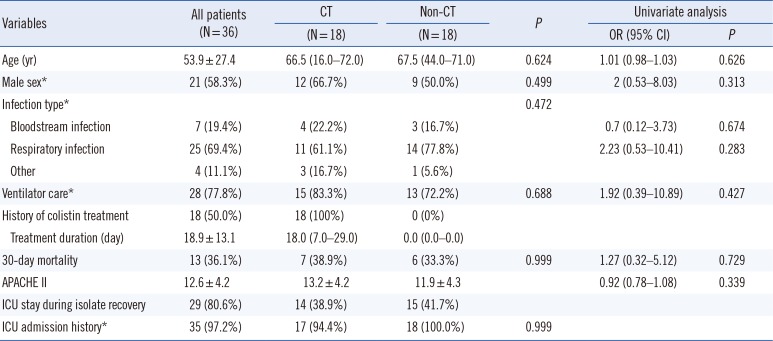
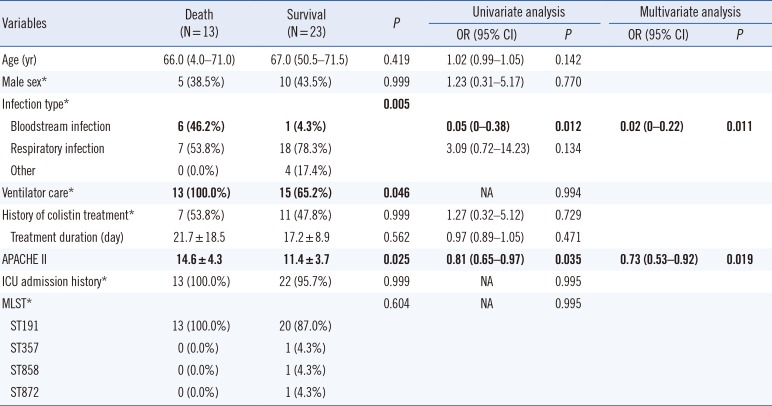
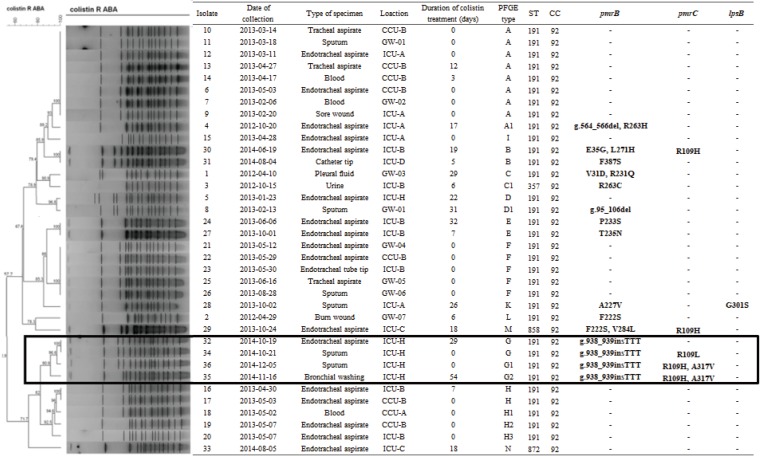
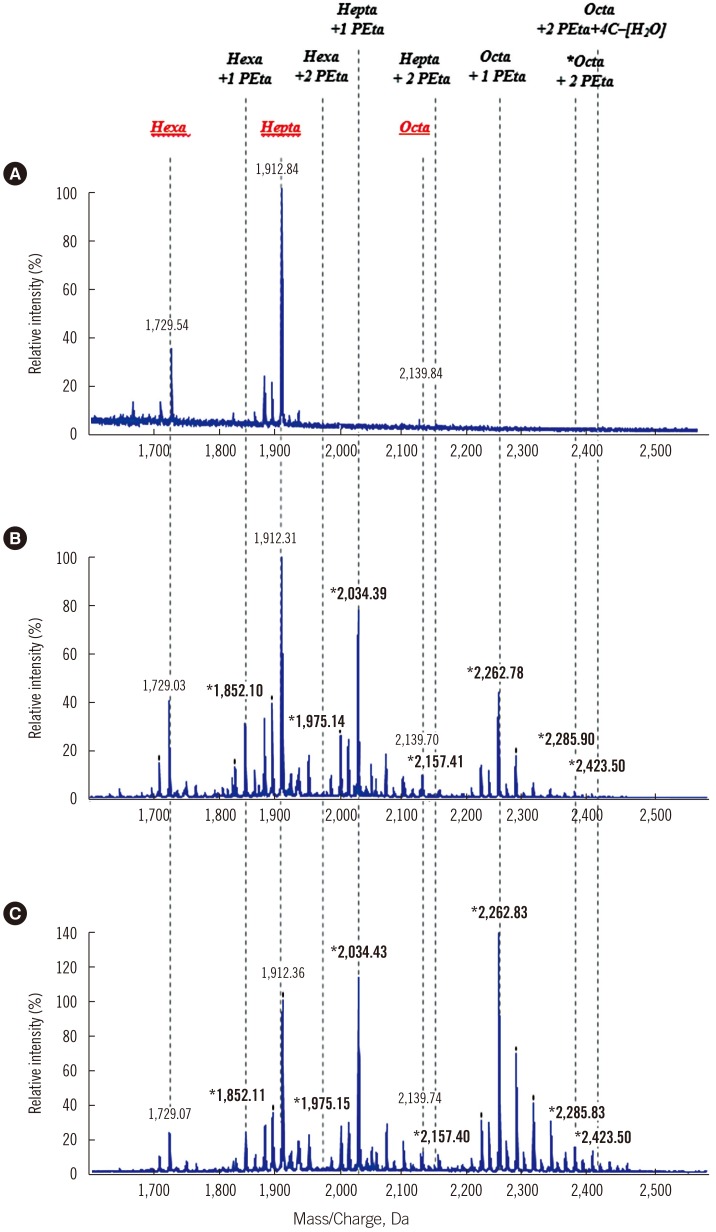
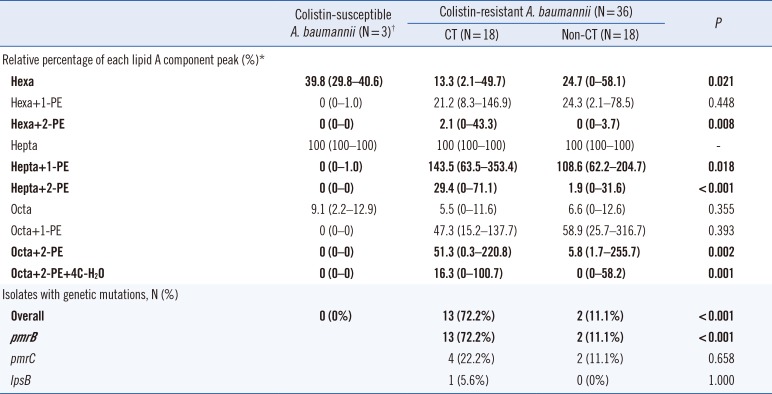
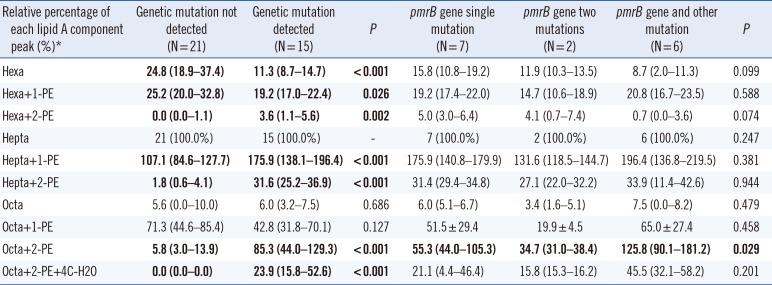




 PDF
PDF ePub
ePub Citation
Citation Print
Print



 XML Download
XML Download